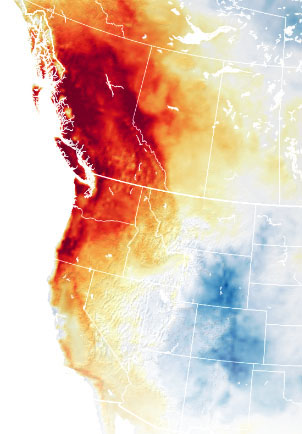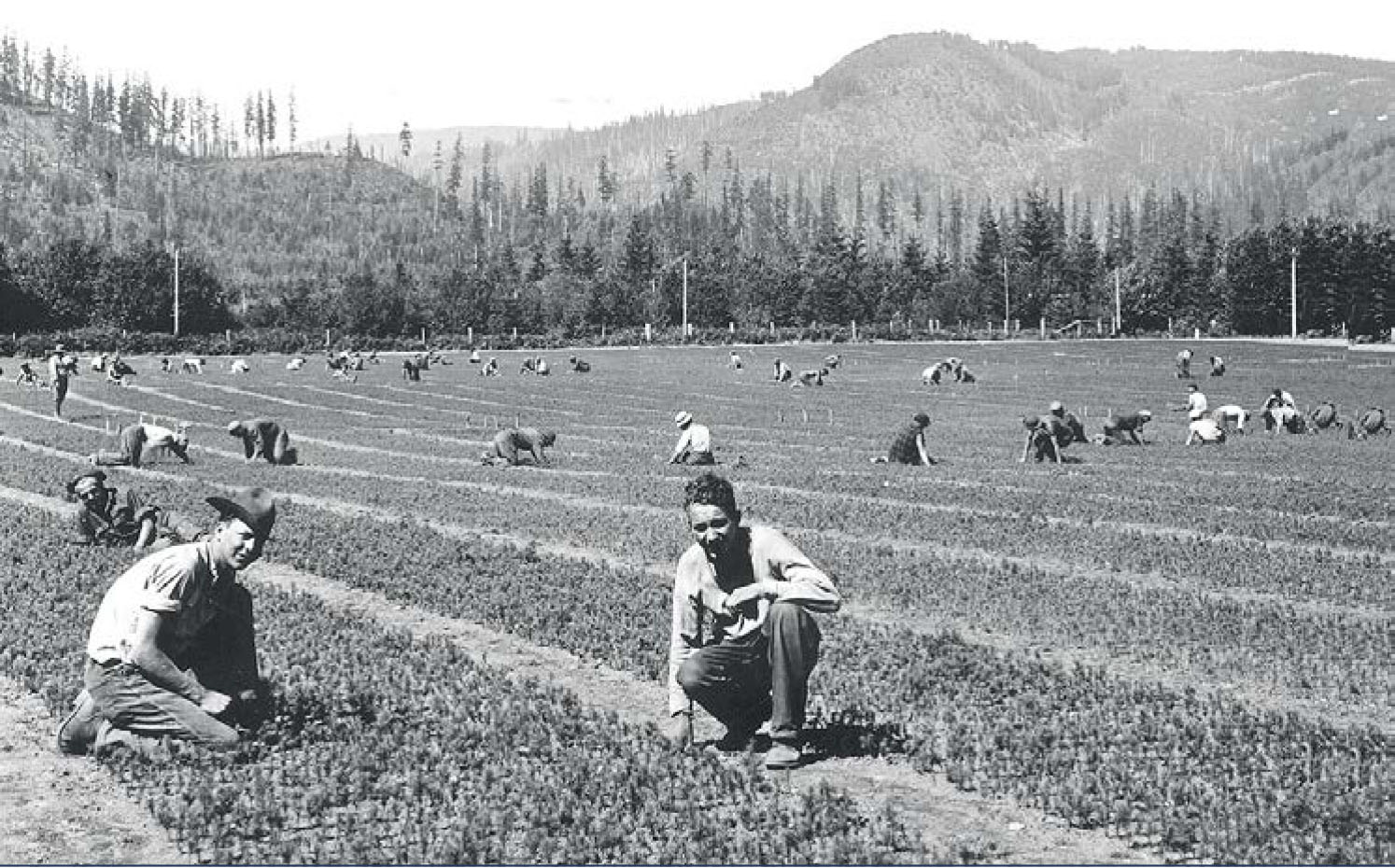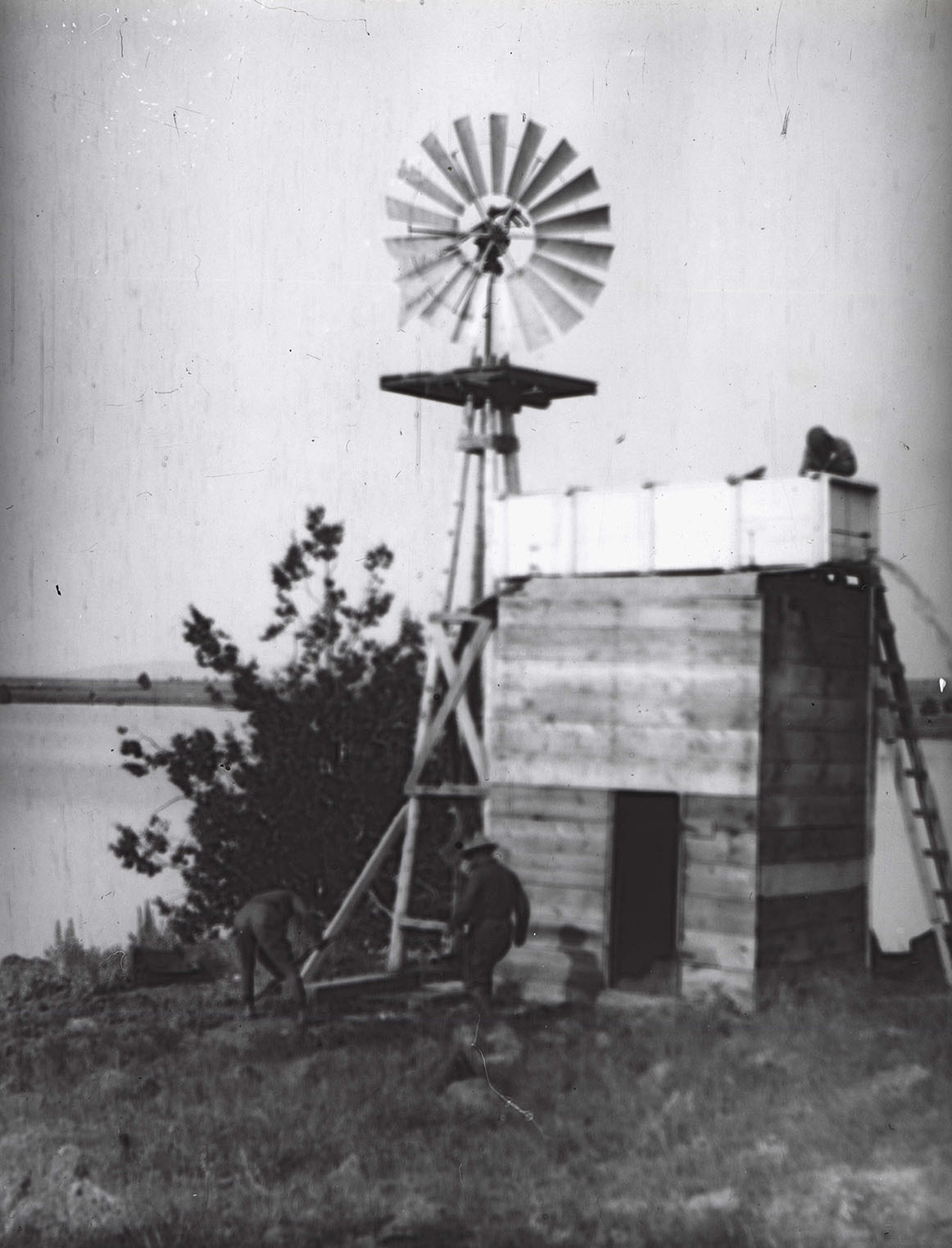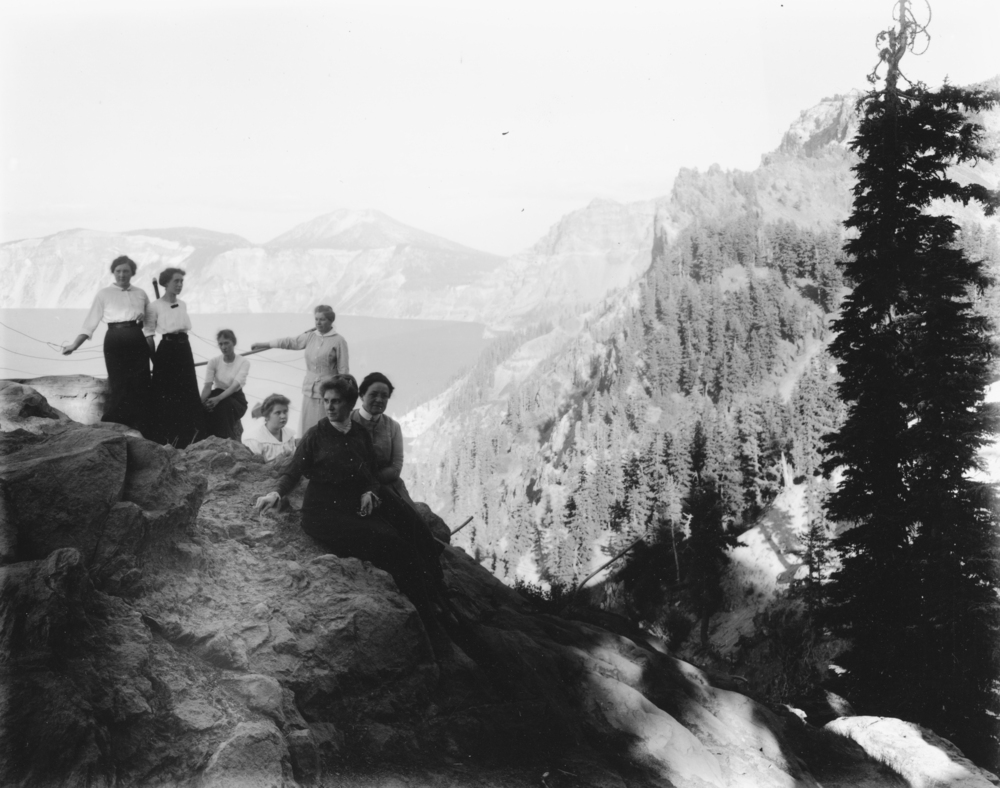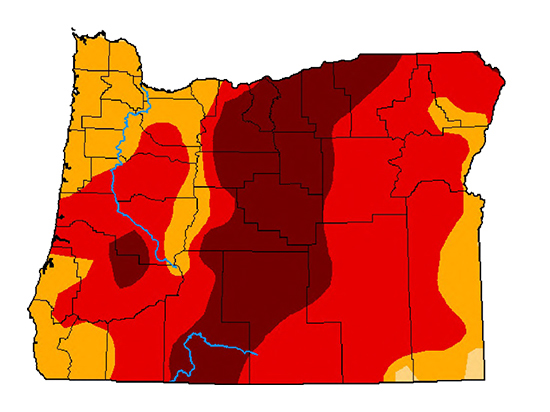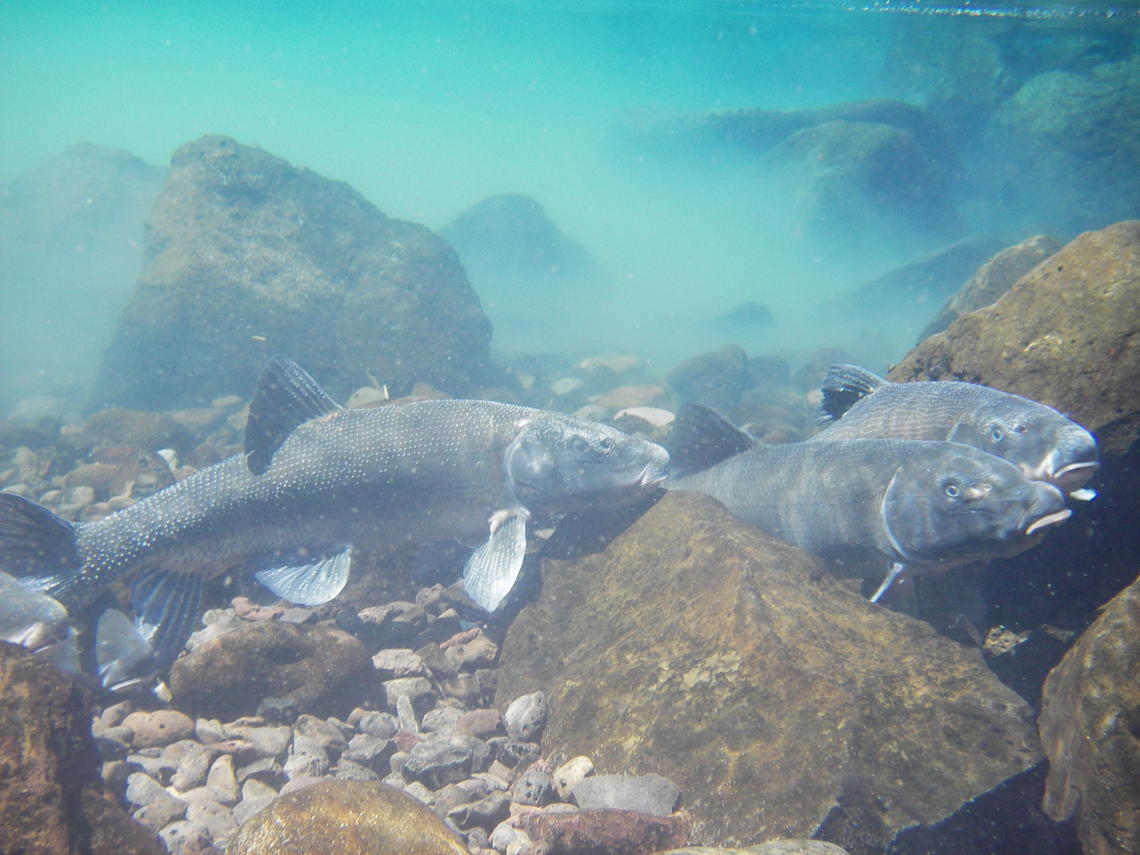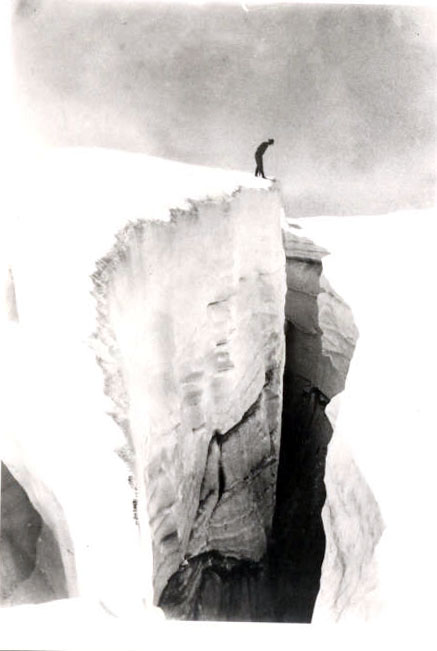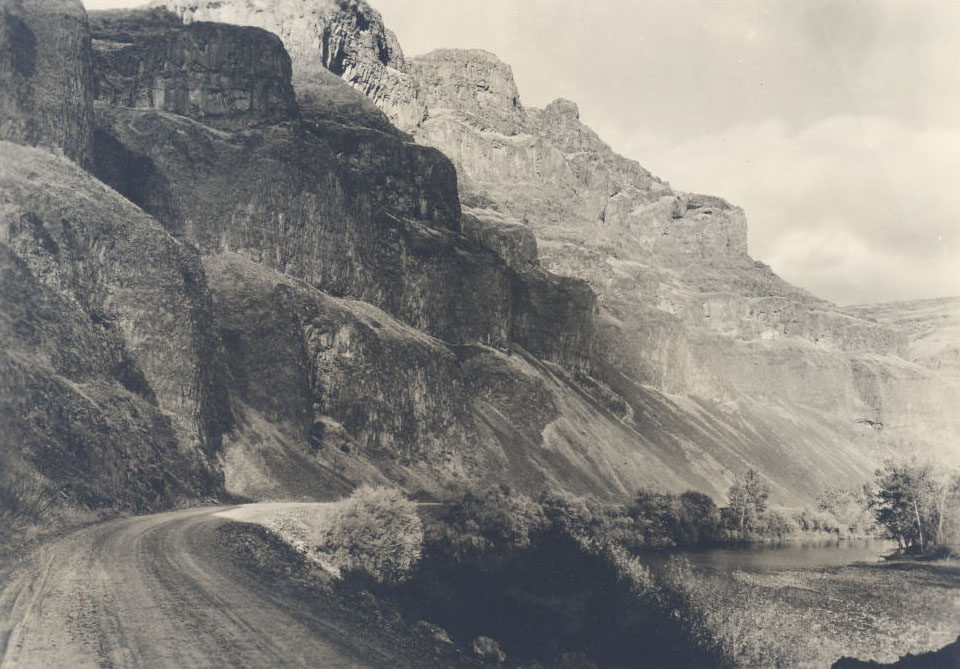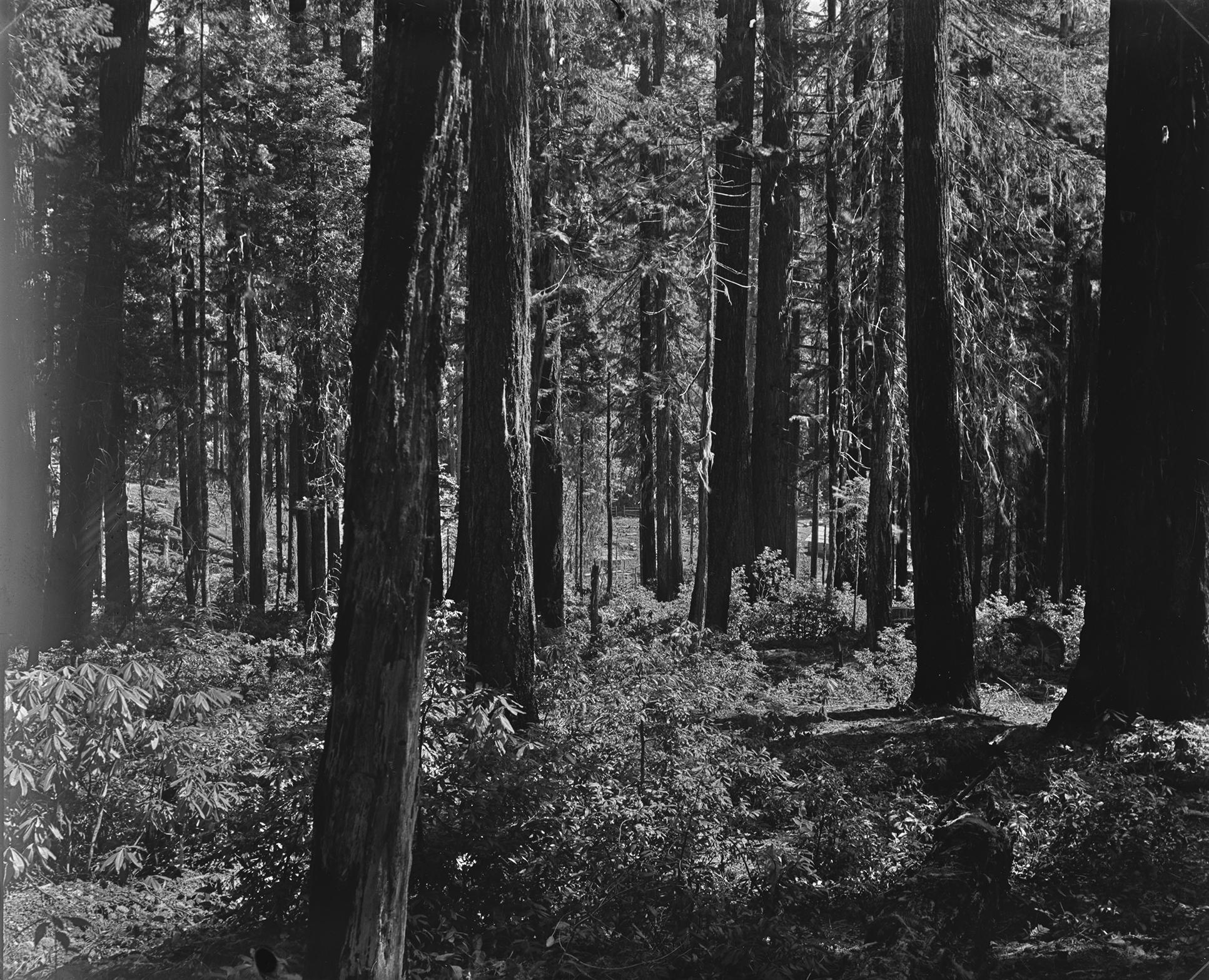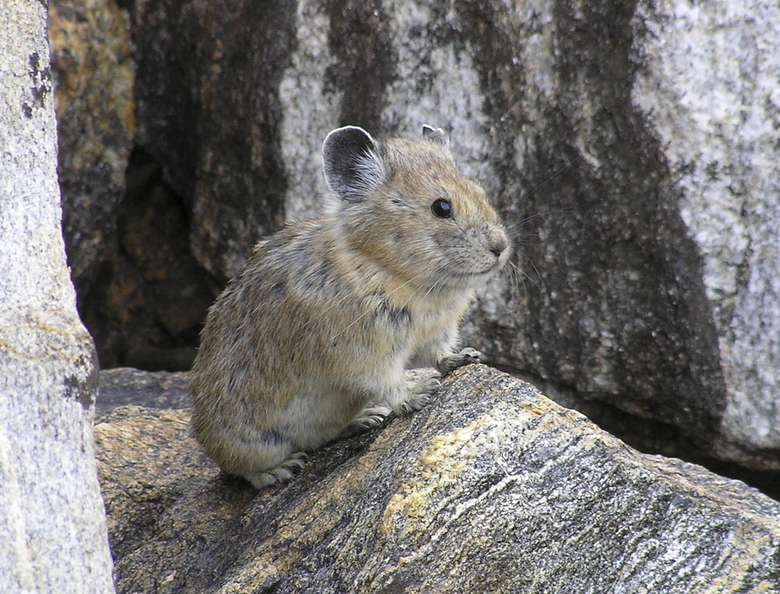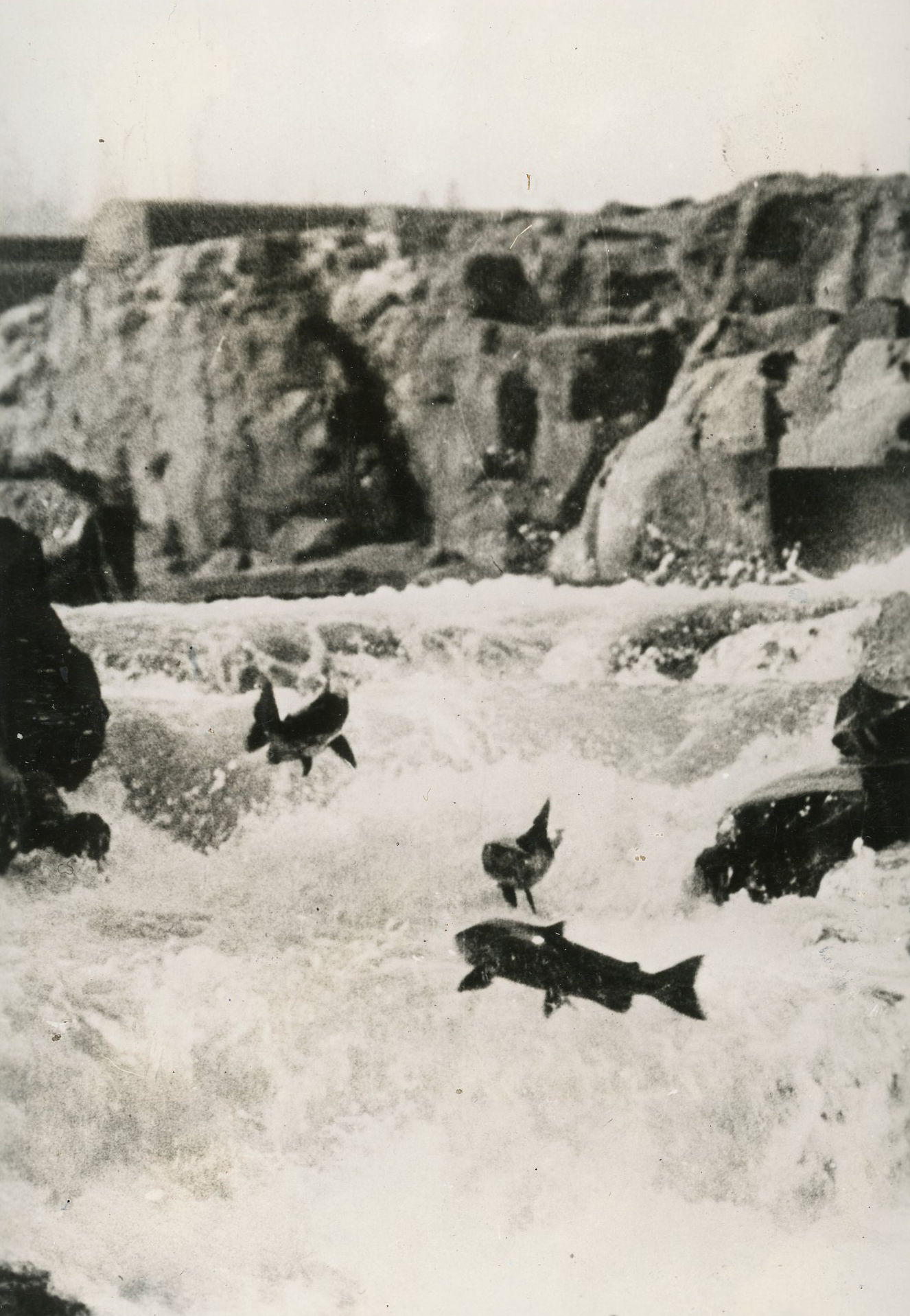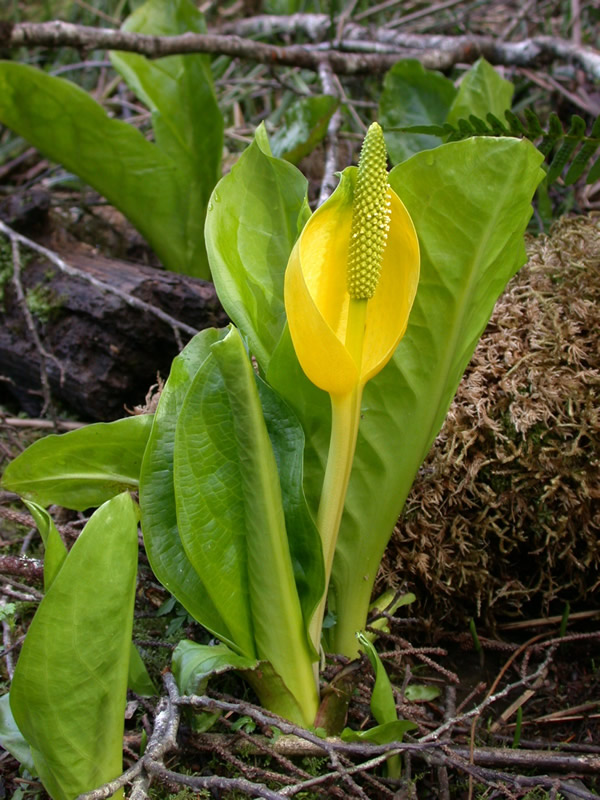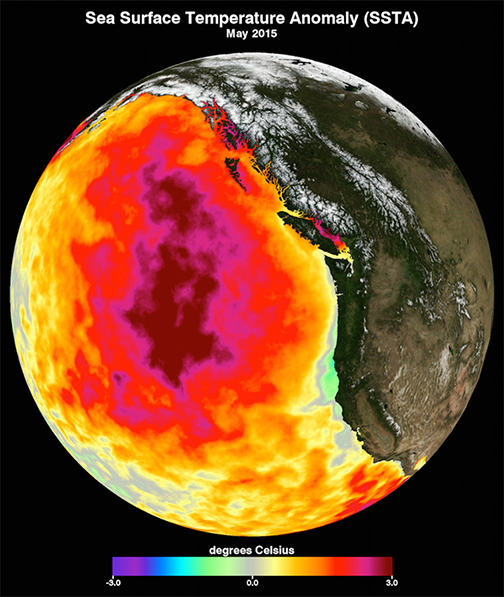Within a few hundred miles in Oregon, you can see snowy volcanoes, parched deserts, semiarid grasslands, alpine meadows, and coastal temperate rainforests. On any given day, the weather across the state can range from freezing cold to baking hot, bone dry to soaking wet, tranquil to tempestuous. Oregon regularly experiences the extremes of average precipitation, temperature, humidity, and wind characteristic of the North American West. Locations in the Coast Range, for example, receive as many as 200 inches of rain in some years, while the rain shadow of Steens Mountain in eastern Oregon sometimes receives as little as five inches. Even highly variable weather creates patterns over time, however, and scientists use the word climate to describe those patterns over decades or even centuries.
Oregon’s climate is not only diverse, it is also changing. In geological time—the intervals of time that geologists use to chart changes and sequences of events in the rock record—Oregon’s climate has vacillated between tropical and arctic. Since the Industrial Revolution, however, human activities have contributed to changes in the Earth’s climate, causing geological change on shorter, human timescales. Scientists refer to the changes that humans make to climate as anthropogenic climate change. Those changes have occurred largely as a result of changes in the composition of the atmosphere, particularly through the emission of greenhouse gases like CO2 that increase the overall temperature of the Earth. Because anthropogenic climate change, on balance, increases the overall temperature of the planet, it is also often referred to as anthropogenic warming or, more commonly, global warming. The terms are not perfectly interchangeable, but all have been used to describe the causes of the climate crisis, a term scientists and concerned citizens often use to refer to the related negative impacts of an increase in average global temperatures on animal and human populations, as well as the ecosystems and infrastructure on which they rely.
Global warming already impacts or is projected to impact Oregon’s natural and built environments, its ecosystems, and its economy. The state’s average temperatures have increased by 2.2ºF (1.2ºC) since 1895, and scientists predict they will increase by another 5ºF (2.8ºC) by 2050 and 8.2ºF (4.6ºC) by 2080. Scientists project that Oregon will see an increase in annual precipitation in the twenty-first century, with more of that precipitation falling as rain and less as snow during warmer, wetter winters. Twenty-first-century Oregon summers are hotter and drier than they were in the twentieth century, and extreme heat events have increased in frequency and severity. Instances of drought have also increased, snowpack has decreased, and spring runoff is occurring earlier. These changes tax the state’s water resources, which support ecosystems, and physical infrastructure that was built for a different climatic regime. They also create a greater likelihood of large-scale fire events, drive new energy demands while compromising hydroelectric energy supplies, and exacerbate threats to endangered and threatened ecosystems and human communities. Changes in ocean temperature, ocean acidity, and sea level threaten the relative stability of coastal and maritime environments.
Anthropogenic climate change presents opportunities in Oregon for certain species, industries, and communities, and some efforts to adapt to and mitigate climate change present opportunities to address equity and social justice. Even so, under current conditions, many of the most severe negative effects of climate change—including extreme heat events, flooding, increased wildfire smoke, and threats to key native species like salmon and steelhead—disproportionately affect the state’s racial and ethnic minorities, tribal communities, and the poor, and they are projected to do so in the future.
How Climate Changes
Climate describes the characteristic weather of a place over time. The word “climate” also serves as a shorthand way to describe the global climate system, which is made up of the many factors that interact to influence the average temperature of the Earth. Scientists call factors that influence the overall temperature of the Earth “climate forcings” or, more accurately, “radiative forcings.” Positive forcings, such as greenhouse gases, tend to increase the temperature of the Earth. Negative forcings, such as some atmospheric aerosols that reflect sunlight, tend to decrease the temperature of the Earth. Forcings can also occur on a local scale, often as a consequence of landscape changes that alter the amount of energy a place reflects compared to how much it absorbs. A large asphalt parking lot, for example, will typically absorb and re-radiate more heat than a nearby forested park.
On a planetary scale, some radiative forcings operate in geological time, independent of human actions. Long-term variations in the Earth’s orbit, for example, have contributed to warming and cooling trends over thousands and hundreds of thousands of years due to variations in the distance of the Earth from the sun. Other radiative forcings that humans do influence, such as greenhouse gas concentrations, have also fluctuated in the absence of humans in geological time, though typically at a much slower rate than during the past two centuries.
In Oregon, regional geophysical changes affecting the Pacific Northwest’s geological features over hundreds of thousands and even millions of years, as well as larger-scale changes in the Earth’s atmosphere, oceans, and orbital path, have created wide-ranging climatic conditions. During the last ice age, which occurred during the late Pleistocene, Oregon was much colder than it is today, with significant ice caps covering Mount Hood and the Oregon Cascades until roughly 18,000 to 12,000 years ago. Sixteen million years ago, however, tropical and subtropical climates in what are now temperate parts of Oregon, such as the John Day Fossil Beds, created an environment for species of bananas, citrus, and tea.
Anthropogenic climate change occurs much more rapidly than geological climate change. Greenhouse gases—that is, gases that absorb and re-radiate energy from the sun, such as water vapor, carbon dioxide, and methane—represent the most important forcings involved in anthropogenic climate change. As early as 1827, French polymath Jean-Baptiste Jacques Fourier recognized that these gases were largely responsible for the even distribution of heat throughout the globe. He was the first to describe this effect, using the word serre, which is French for greenhouse, although it is an inaccurate description of how these gases actually behave. A greenhouse works primarily by preventing air warmed by the sun from escaping an enclosed space, while the “greenhouse effect” describes the way atmospheric gases themselves warm up, absorbing and re-radiating heat from both the sun and the surface of the earth.
Working independently in the 1850s and 1860s, American scientist and suffragist Eunice Foote and Irish physicist and mountaineer John Tyndall each conducted experiments showing that water vapor and carbon dioxide worked as important greenhouse gases. As other scientists soon noted, whereas humans contribute only indirectly to the amount of water vapor in the atmosphere, they contribute directly to the concentration of carbon dioxide in the atmosphere through the burning of fossil fuels. In 1896, Swedish Nobel laureate chemist Svante Arrhenius calculated that a doubling of atmospheric carbon dioxide would warm the earth by around 5ºC (9ºF). Later, more sophisticated computer models revised Arrhenius’s calculations, predicting that a doubling of CO2 will result in a 1.5-4ºC (2.7-7.2ºF) rise in temperature. In 1938, British steam engineer Guy Stewart Callendar argued that the warming of the earth due to carbon dioxide from fossil fuels was underway.
In 1956, nuclear physicist Hans Suess devised a way to use radioactive carbon isotopes to measure just how much additional atmospheric CO2 came from fossil fuels. He and oceanographer Roger Revelle soon realized that Callendar was probably right. Two years later, Revelle helped secure funding for Charles David Keeling to begin measuring atmospheric CO2 at Mauna Loa, Hawaii, and later elsewhere around the globe. By increasing the CO2 in the atmosphere, the scientists suggested, humanity was carrying out a “grand geophysical experiment,” which they hoped Keeling’s measurements would help to record. The iconic image of anthropogenic climate change, which depicts the annually oscillating, upward-sloping graph of atmospheric carbon dioxide since 1958, is called the Keeling Curve. Carbon dioxide serves as a benchmark in the global climate system, and scientists describe the potential for other gases to contribute to climate change by comparing them to carbon dioxide, calculating their CO2 equivalent (CO2e).
How Scientists Know What They Know About Climate Change
Scientists measure CO2, other greenhouse gases, and temperature to track changes in the global climate system. They also create models to understand how CO2e and other climate forcings affect the earth’s energy budget—that is, the total amount of energy flowing into and out of the climate system. These are called energy budget models. Actual variations in temperature and precipitation due to climate change vary considerably over the planet, however, and simple energy budget models don’t capture these variations well. Other models, called general circulation models, assess how changes in the energy budget affect the circulation of the Earth’s atmosphere and oceans, which directly impact weather and climate. In their models, scientists often use known quantities from the past to verify them, by comparing their models’ results with measured climatic trends from the past. Using a combination of theoretical knowledge, observed data, and model simulations, scientists have built a sophisticated understanding of the global atmosphere that enables them to describe and predict the behavior of the global climate system under a number of possible greenhouse gas conditions. These are called emissions scenarios.
Scientific institutions periodically conduct assessments of what is known about anthropogenic climate change. Internationally, the most important body for evaluating the scientific consensus on climate change is the Intergovernmental Panel on Climate Change (IPCC), which has conducted a comprehensive assessment roughly every five to seven years since its founding in 1990. According to the IPCC, most scientists agree that anthropogenic climate change has begun to affect humans, other species, and the environments they inhabit; that the production of CO2 and other greenhouse gases by human activities represents the primary cause of anthropogenic climate change; and that human activities will likely continue to drive increasingly large changes to the climate in the future.
In Oregon, scientists conduct periodic reviews of what is known about how climate change affects the state. Since 2007, the Oregon Climate Change Research Institute at Oregon State University has conducted biennial assessments of climate change in Oregon in the service of the Oregon Global Warming Commission. OCCRI completed its Fifth Oregon Climate Assessment Report (OCAR5) in January 2021. Using emissions scenarios and models consistent with those used by the IPCC along with scientific literature on climate change in Oregon, OCAR5’s thirty-two authors assessed the state of the science on eleven climate-related topics, focusing on natural hazards and the challenges of adaptation in natural and human systems.
How Climate Change Impacts Oregon
Temperature is perhaps the most obvious and important indicator of climate change. Globally, the Earth’s average surface temperature has increased by just over 2ºF (1.1ºC) since 1895, at a rate of about 0.14ºF (0.08ºC) per decade. The rate of warming has been more than double the average in more recent decades, however, at 0.32ºF (0.18ºC) per decade since 1981. Oregon temperatures have largely followed the same trend. Oregon’s average temperature has increased by 2.2ºF (1.2ºC) since 1895, with a similar increase in the rate of change in the past four decades. If current trends in global emissions persist, Oregon’s average temperature will increase by 5ºF (2.8ºC) by 2050 and 8.2ºF (4.6ºC) by 2080.
Anthropogenic climate change also brings changes in the timing, intensity, and type of precipitation the state receives. Annual precipitation varies widely across the state and from year to year, but Oregon generally experiences a winter wet season punctuated by large precipitation events and a summer dry season with little rain or snow. Climate models predict that this trend will persist and intensify, with an increase in total average annual precipitation for the state as a whole. Much of that precipitation will fall during large winter storms that are associated with atmospheric rivers, which are long corridors of warm, wet air in the atmosphere that are currently responsible for 25 to 30 percent of the precipitation in the state. Because of increased average temperatures, more and more of that precipitation is projected to fall as rain rather than snow during the winter, consequently decreasing snowpack across the state. Average spring snowpack has already decreased at every snow observation station in the state since 1955, including a decline of more than 35 percent since 1982 in the central Cascade Range.
Changes in the quantity, timing, and type of precipitation combine with the direct effects of increased temperatures to affect a variety of water-dependent systems throughout Oregon. Half of the energy produced in the state comes from hydroelectric power. Changes in the timing and quantity of precipitation and runoff in Pacific Northwest river systems threaten the efficacy and reliability of the system of dams and reservoirs that provide that energy. Low water and high temperatures also adversely affect some native aquatic species, most notably cold water migratory fish like salmon and steelhead. The state is already drought-prone, and the incidence and severity of drought has increased since the turn of the twenty-first century in the western United States and in Oregon in particular, with adverse effects on agriculture, recreation, and ecosystems. Though annual average precipitation will likely increase because of anthropogenic climate change, hotter and drier summers, decreased mountain snowpack, and reduced spring and summer runoff will make seasonal drought likely in the future. Meanwhile, as more precipitation falls as rain rather than snow, the risk of winter and spring floods will increase.
Warmer, drier summers—exacerbated by reduced snowpack and earlier, reduced runoff—also increase the risk of wildfires in Oregon. Since the 1990s, scientists have observed an increase in fire activity associated with a combination of climate change and historical fire-suppression strategies. Fires in Oregon’s wildlands and at the wildland-urban interface during the summer and autumn of 2020 burned more than a million acres, displacing thousands of people and creating hazardous air quality across the Northwest, underscoring the changing wildfire dynamics in the state.
As a coastal state, Oregon is susceptible to changes in the ocean. Globally, increases in average temperatures contribute to the melting of glaciers, which raises sea levels. Global sea levels have risen between seven and eight inches since 1900, increasing the likelihood of storm-surge floods and coastal erosion along much of the Oregon shoreline. The ocean is also warming, and the eastern North Pacific is projected to warm by 5ºF (2.8ºC) by 2050, punctuated by periodic marine heatwaves like the one in 2014, when temperatures off the central Oregon Coast increased by 8.1ºF (4.5ºC). Increased water temperatures can disrupt marine ecosystems and alter the range of species like salmon and steelhead while compromising the health of other species like Dungeness crabs. Ocean temperatures also affect species that live above the water, including marbled murrelets, a threatened seabird that has been less likely to colonize certain habitats during years in which ocean temperatures were high.
Marine ecosystems underscore a larger trend. Throughout the state, changing air and water temperatures, precipitation patterns, and runoff associated with anthropogenic climate change exacerbate habitat loss and other pressures on species and ecosystems. The projected rate of climatic change over the next century exceeds anything in the last 65 million years, and it is difficult to predict how Oregon’s flora and fauna will respond.
Climate change exacerbates existing stressors within human social systems as well. In Oregon, as elsewhere in the United States, climate change tends to magnify inequalities, particularly as they relate to public health, housing, and energy. This is especially true when it comes to the extreme heat events that accompany rising average temperatures. Extreme heat can come in the form of individual hot days, heatwaves, and full seasons with both daytime high temperatures and nighttime low temperatures well above average. In Oregon, scientists use the number of days above 90ºF as a benchmark for hot days. Since 1940, Portland and Pendleton have experienced an increase of the average number days above 90ºF by eight days; Medford’s average number of hot days per year has increased by twenty-one in the period since 1940. The broader climatic effects of increased global temperatures can impact the weather patterns that drive extreme heat events like the midsummer heatwave of 2021, which brought the highest temperatures on record to western Oregon.
Extreme heat affects Oregon communities in different ways. The concentration of heavy, dense materials like asphalt and concrete absorbs heat well, so cities tend to be many degrees warmer than nonurban areas, even at night. This is called the heat island effect, and Portland has one of the most pronounced heat island effects in the United States. It does not occur consistently throughout the city, however. The geography of extreme heat reflects historical practices of segregation and redlining, a federal loan-rating system from the 1940s that banks and real estate agents used to methodically deny African Americans and other people of color loans in certain parts of the city, reinforcing segregation and disincentivizing investment in Black communities. As a result of insufficient investment and city neglect, historically Black neighborhoods have fewer of the mature trees, green spaces, and permeable surfaces that help mitigate the heat island effect. These neighborhoods are consequently the hottest in Portland, as much as 15ºF to 20ºF (8.3-11.1ºC) warmer than in Forest Park, a large urban area bordered by wealthy and mostly white neighborhoods. Economically disadvantaged neighborhoods and communities are also disproportionately vulnerable to wildfire smoke and other air quality hazards, to floods and storms, and to drought or water insecurity, all associated with anthropogenic climate change.
Oregon's Response to Climate Change
Oregon has long been a national leader in environmental advocacy and environmental policy, a legacy that primed the state for relatively early engagement with the policy and politics of climate change. Most of Oregon’s early climate change policy initiatives occurred at the municipal level, beginning in 1993 when Portland became the first city in the United States to adopt a global warming reduction strategy. Since then, fourteen Oregon cities have committed to the development of Climate Action Plans—comprehensive municipal strategies for reducing emissions and adapting to the effects of climate change. As of 2022 the OCCRI has produced county-level climate change projections to support natural hazard mitigation plans for eleven counties, and many other Oregon counties have also incorporated climate change into natural hazard planning.
At a state level, the Oregon legislature passed House Bill 3543 in 2007, creating a Global Warming Commission to assess and plan for the impacts of climate change on Oregon’s natural resources, economy, and communities. In 2019, the legislature passed House Bill 2020, which authorized a statewide emissions trading system aimed at reducing the state’s emissions to 45 percent of 1990 levels by 2035. In 2020, Governor Kate Brown signed executive order 20-04, laying out a sector-by-sector Oregon Climate Action Plan focused on reducing Oregon’s dependence on fossil fuel energy sources and promoting climate equity. It was an effort to ensure that the benefits of climate change policies are distributed equitably and that the effects of climate change do not disproportionately burden economically disadvantaged or marginalized communities.
Oregon is also the state where young people have waged an important national legal battle over climate change. In 2015, twenty-one young people represented by Our Children’s Trust, an Oregon nonprofit, filed suit against the United States government in U.S. District Court for the State of Oregon for violating their constitutional right to life, liberty, and the pursuit of happiness by continuing to support programs that contribute to climate change. The case, Juliana v. United States, was still under adjudication in 2022.
Climate change is also an important issue outside state government and the courts. Oregon has long been a state where advocacy groups, scientific institutions, and other nonprofit organizations have focused on mitigating and adapting to the environmental, economic, and social impacts of climate change. Many national environmental organizations and climate advocacy groups, such as the Sierra Club and 360.org, have strong Oregon chapters, and there are several homegrown environmental, conservation, and land use groups such as 1000 Friends of Oregon, the Oregon League of Conservation Voters, and Energy Trust of Oregon. Talented authors, artists, and musicians in Oregon, including artist Daniela Molnar, have engaged with the ideas and consequences of climate crisis through their creative work.
Tribal governments in Oregon are also deeply involved in planning for and adapting to anthropogenic climate change. Tribes face many disproportionate effects of climate change, in large part the result of a history of dispossession and genocide. In addition to exacerbating vulnerability to extreme weather, natural hazards, and food insecurity in tribal communities, climate change presents unique threats to tribal culture and traditions rooted in generational relationships to place. Changes to the distribution of plant and animal species and to animal behavior associated with climate change undermine traditional environmental knowledge—that is, place-specific forms of practical and spiritual understanding that is often passed from generation to generation with other forms of cultural practices. At least fifteen Oregon tribes have developed climate vulnerability assessments, adaptation plans, and hazard mitigation plans, focused not only on building resiliency to climate change but also on shoring up treaty rights, expressing sovereignty, and attempting to redress some of the historical wrongs that made the tribes vulnerable to climate change in the first place.
If anthropogenic climate change presents unique, historically situated challenges for Oregon tribes, their responses to climate change also underscore the ways in which efforts to mitigate and adapt to climate change can present opportunities to promote equity and resiliency in human and ecological communities throughout the state. Increases in average temperature and changes in precipitation create problems in and of themselves, but the most severe effects of climate change arise from the ways in which global warming exacerbates other vulnerabilities and inequalities in human and ecological systems. As a result, addressing climate change is not only a matter of reducing emissions and shoring up infrastructure; it is also about addressing present inequalities and historical injustices that stand in the way of a healthy, just, and resilient Oregon in the face of a volatile climatic future.
-
![]()
Martha Piper frying egg on sidewalk, 1946.
Oregon Historical Society Research Library, Monner, OrgLot1284_1118_2 -
![]()
Map of temperature anomalies, higher or lower than average, during 2021 heat dome.
Courtesy U.S. Department of Agriculture, NASA Earth Observatory -
![]()
Collier Glacier, 1910.
Courtesy Mazamas, Jim O'Connor
-
![]()
Collier Glacier, receded, 2011.
Courtesy Jim O'Connor, USGS
-
![]()
Earth's Energy Budget, graphic.
Courtesy NASA -
![]()
The Power of Trees, Portland, Oregon.
Courtesy Climate Central
Related Entries
-
![Assisted Plant Migration]()
Assisted Plant Migration
Assisted migration is the human-assisted movement of species and popula…
-
![Camas]()
Camas
Camas is a North American bulb-forming geophyte whose greatest diversit…
-
![Climate Change and the History of Energy in Oregon]()
Climate Change and the History of Energy in Oregon
Unlike in other parts of the country, hydropower is the largest source …
-
![Crater Lake National Park]()
Crater Lake National Park
Crater Lake National Park, which the U.S. Congress set aside in 1902, i…
-
![Daniela Naomi Molnar (1979–)]()
Daniela Naomi Molnar (1979–)
Oregon artist Daniela Naomi Molnar pioneered the notion that art can sp…
-
![Dominique Bachelet (1957–)]()
Dominique Bachelet (1957–)
Dominique Bachelet is a climate scientist and science communications sp…
-
![Droughts in Oregon]()
Droughts in Oregon
A standard dictionary definition for drought is “a prolonged period of …
-
![Endangered Klamath suckers]()
Endangered Klamath suckers
Since Lost River suckers (Deltistes luxatus) and shortnose suckers (Cha…
-
![Energy Trust of Oregon]()
Energy Trust of Oregon
Energy Trust of Oregon was established in 2002 as a nonprofit organizat…
-
![Glaciers in Oregon]()
Glaciers in Oregon
Glaciers and permanent snowfields—found in many western states, includi…
-
![Jane Ann Lubchenco (1947–)]()
Jane Ann Lubchenco (1947–)
Jane Lubchenco is an internationally recognized environmental scientist…
-
![John Day Fossil Beds Flora and Fauna and Climate Change]()
John Day Fossil Beds Flora and Fauna and Climate Change
The John Day fossil beds in north-central Oregon have one of the world’…
-
![Juliana v. United States]()
Juliana v. United States
Described as the “case of the century” and the “biggest case on the pla…
-
![Marbled Murrelet]()
Marbled Murrelet
The marbled murrelet (Brachyramphus marmoratus) is a unique and cryptic…
-
![Oregon Climate Change Research Institute]()
Oregon Climate Change Research Institute
The Oregon Climate Change Research Institute was established in 2007 to…
-
![Oregon Forests and Climate Change]()
Oregon Forests and Climate Change
How climate change affects Oregon forests and how those forests affect …
-
![Oregon Global Warming Commission]()
Oregon Global Warming Commission
The Oregon legislature created the Oregon Global Warming Commission in …
-
![Pacific Northwest–Southwest Intertie]()
Pacific Northwest–Southwest Intertie
No area of the West is isolated from the western electric power supply,…
-
![Pika]()
Pika
American pikas are small chinchilla-like mammals, related to rabbits an…
-
![Pleistocene Pluvial Lakes]()
Pleistocene Pluvial Lakes
During the Last Glacial Maximum, from about 24,000 to about 18,000 year…
-
![Redlining and Climate-Related Heat]()
Redlining and Climate-Related Heat
The legacy of redlining—the spatial distribution of poverty, housing, g…
-
Reuse and Restore Movement in Portland
The repurposing and reuse of buildings in Portland have their roots in …
-
![Salmon]()
Salmon
The word “salmon” originally referred to Atlantic salmon (Salmo salar),…
-
![Skunk Cabbage]()
Skunk Cabbage
Skunk cabbage (Lysichiton americanus), which grows in mucky soils and m…
-
![The 2021 Pacific Northwest Heatwave (Heat Dome)]()
The 2021 Pacific Northwest Heatwave (Heat Dome)
A historic heatwave affected Oregon and the greater Pacific Northwest d…
-
![The Blob: Impacts of the 2013-2016 Marine Heatwave on Oregon]()
The Blob: Impacts of the 2013-2016 Marine Heatwave on Oregon
From December 2013 to August 2016, the northeast Pacific Ocean experien…
-
![Warren Morton Washington (1936–2024)]()
Warren Morton Washington (1936–2024)
A groundbreaking climate scientist, Warren M. Washington played a major…
-
Whitebark pine
Whitebark pine (Pinus albicaulis) is arguably Oregon's quintessential t…
Map This on the Oregon History WayFinder
The Oregon History Wayfinder is an interactive map that identifies significant places, people, and events in Oregon history.
Further Reading
Allan, Stuart, et al. Atlas of Oregon. Edited by William G. Loy. 2d ed. Eugene: University of Oregon Press, 2001.
“A History of Climate Leadership: Milestones and Key Documents (1993-2021).” City of Portland.
Dessler, Andrew E. Introduction to Modern Climate Change. Cambridge, Eng.: Cambridge University Press, 2012.
Edwards, Paul N. A Vast Machine: Computer Models, Climate Data, and the Politics of Global Warming. Cambridge, Mass.: MIT Press, 2013.
Fleming, James Rodger. Historical Perspectives on Climate Change. Oxford: Oxford University Press, 1998.
“Geology, Life, and Climate.” Oregon Paleo Lands Center.
Howe, Joshua P. 2015. “Getting Past the Greenhouse: John Tyndall and the Nineteenth Century History of Climate Change.” In The Age of Scientific Naturalism: Tyndall and His Contemporaries. Edited by Michael Reidy. Abingdon-on-Thames, Oxfordshire, England: Routledge, 2015.
Howe, Joshua P. Behind the Curve: Science and the Politics of Global Warming. Seattle: University of Washington Press, 2014.
Intergovernmental Panel on Climate Change. Climate Change 2014: Synthesis Report. Contribution of Working Groups I, II and III to the Fifth Assessment Report of the Intergovernmental Panel on Climate Change. Edited by R.K. Pachauri and L.A. Meyer. Geneva, Switzerland: IPCC, 2014.
Jackson, Roland. “Eunice Foote, John Tyndall, and a Question of Priority,” Notes and Records: The Royal Society Journal of the History of Science 74 (February 13, 2019): 105-18.
"State of the Climate: Global Climate Report for 2021." NOAA National Centers for Environmental Information.
Climate at a Glance Backward: State-wide Time Series. NOAA.
“State Energy Profiles: Oregon.” U.S. Energy Information Association, April 2010.
Weart, Spencer R. The Discovery of Global Warming. Rev. ed. Cambridge, Mass.: Harvard University Press, 2008.
“All Cities with Climate Action Plans.” Zero Energy Project.


